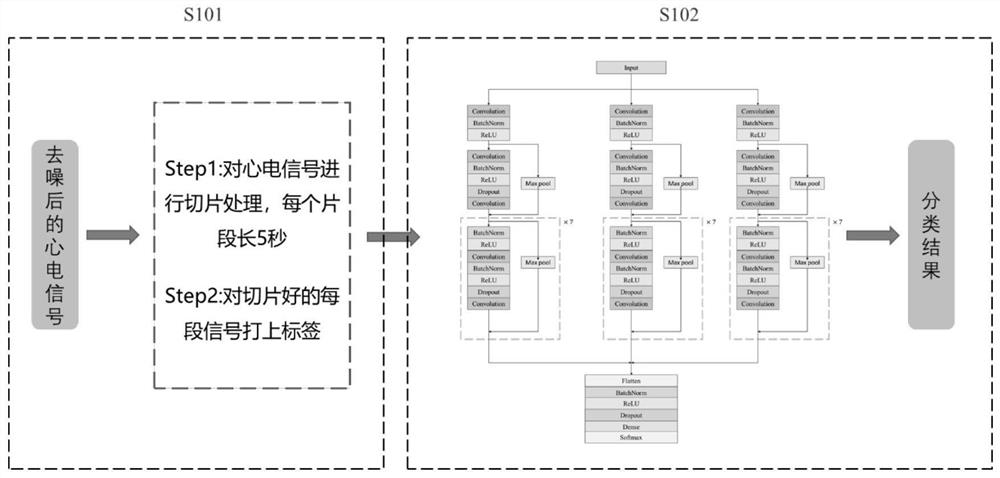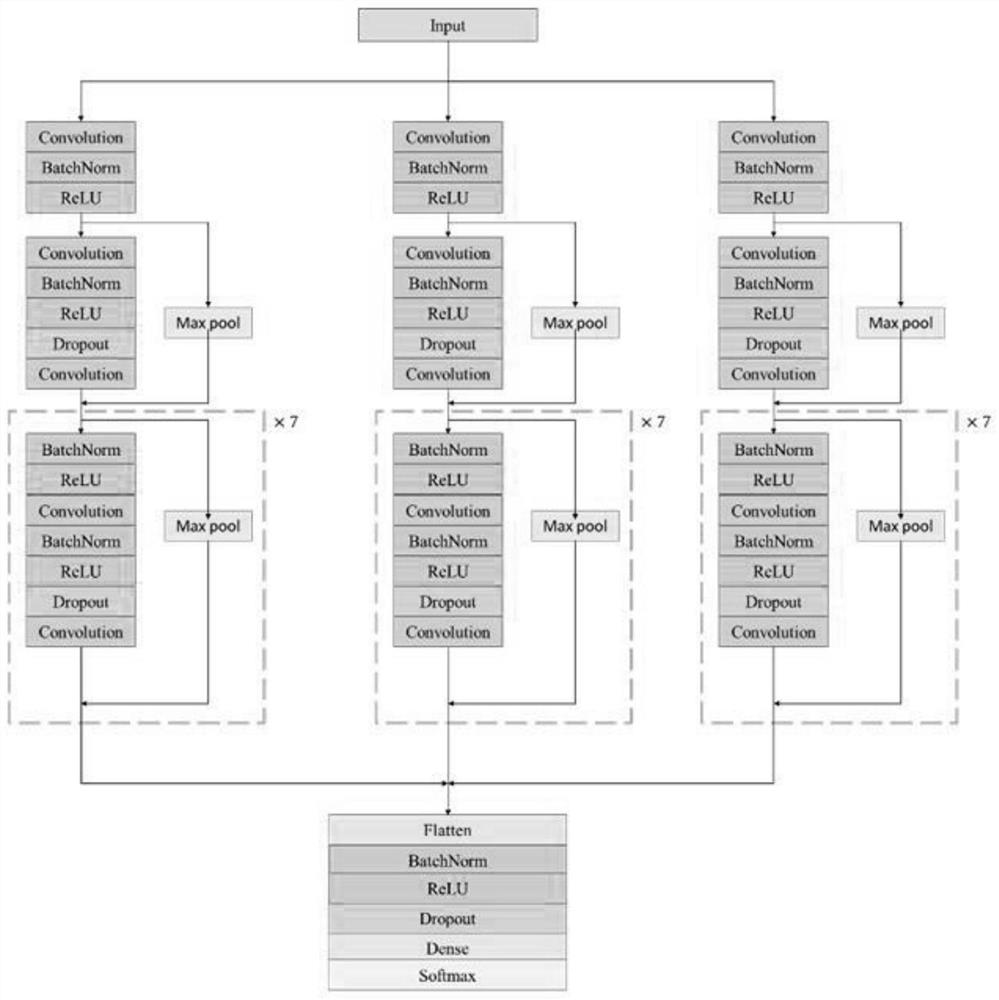Single-lead ECG signal classification method and system based on improved residual network
A signal classification and classification system technology, applied in the field of information processing, can solve problems such as large impact, error-prone, heavy workload, etc., and achieve the effect of low data collection equipment requirements, low collection operation requirements, and high recognition accuracy
- Summary
- Abstract
- Description
- Claims
- Application Information
AI Technical Summary
Problems solved by technology
Method used
Image
Examples
Embodiment Construction
[0053]The present invention is described in further detail now in conjunction with accompanying drawing.
[0054] Such as figure 1 As shown, a single-lead ECG signal classification method based on the improved residual network, including:
[0055] S101: Segment the original ECG signal: Segment the original ECG signal with 5 seconds as the window length.
[0056] Time window lengths such as 2 seconds and 4 seconds can also be used, but the experimental results show that it has little effect on the accuracy. In addition, depending on the sampling rate, the number of ECG signal data points contained in the time window may be different. Here, the sampling rate of the MIT-BIH arrhythmia data is 360Hz, that is, 360 times per second.
[0057] S102: Use the residual network to process the signal: input the segmented data into the residual network, and the output result of the processed residual network is the recognition result corresponding to the original ECG signal.
[0058] Suc...
PUM
 Login to View More
Login to View More Abstract
Description
Claims
Application Information
 Login to View More
Login to View More - R&D
- Intellectual Property
- Life Sciences
- Materials
- Tech Scout
- Unparalleled Data Quality
- Higher Quality Content
- 60% Fewer Hallucinations
Browse by: Latest US Patents, China's latest patents, Technical Efficacy Thesaurus, Application Domain, Technology Topic, Popular Technical Reports.
© 2025 PatSnap. All rights reserved.Legal|Privacy policy|Modern Slavery Act Transparency Statement|Sitemap|About US| Contact US: help@patsnap.com



